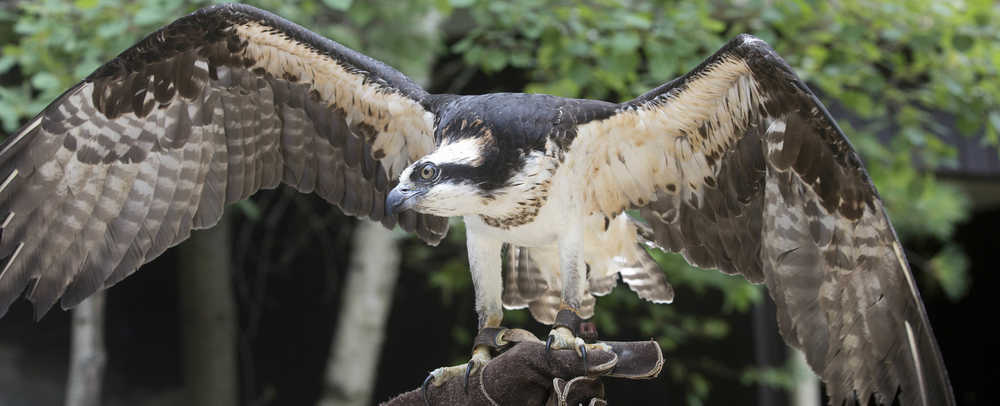TILTON, N.H. — Scientists have long known ospreys make an epic journey each summer from New England to South America. But the details of their dangerous trip remained a mystery — until now.
Thanks to trackers on the backs of these fish-eating raptors, scientists are filling in the picture. And what they are learning is troubling.
The brown-and-white birds get hit by cars and ships, shot by angry chicken farmers and blown off course during hurricane season. One even ended up on a ship that took it to Portugal.
By some accounts, up to 80 percent of the young birds making the trip don’t return to New England — compared to 15 percent of adults.
“Some of them make it to South America. A lot of them don’t,” said Iain MacLeod , executive director of the Squam Lakes Natural Science Center in Holderness, New Hampshire, who studies ospreys that spend their spring and summers in the state raising their young.
Despite migration troubles, ospreys are experiencing a resurgence similar to bald eagles: from a low of a few hundred osprey pairs in the 1970s in New England to as many as 2,000 pairs currently, including 1,000 in Maine.
Some of the recovery results from a ban on pesticides like DDT as well as measures such as guards on nests to keep out raccoons and other predators that eat their eggs. Adult osprey can live up to two decades.
Starting in August, the birds travel as much as 5,000 miles down the Atlantic Coast and across the Caribbean before they end up in the northern part of South America and the Amazon basin, where they spend the winter.
Scores of male birds have been equipped with trackers, nearly 500 so far in the United States and Europe. The matchbox-size devices use miniature GPS-enabled transmitters to show the birds’ precise location, altitude, speed and time it takes for them to complete the trip.
First used in 1995, the devices provide a detailed map of the route taken by the birds, including pit stops in Rhode Island and Florida. Juvenile ospreys on Martha’s Vineyard, too, were tracked crossing nearly a thousand miles of ocean on their way to Bermuda.
The trackers show most birds go through a narrow route across the island of Hispaniola that includes the Dominican Republic and Haiti and then onwards over Cuba.
“All of the birds are funneling through a very narrow area,” said Rob Bierregaard , an ornithologist at Drexel University in Philadelphia who has tagged ospreys with MacLeod.
“If something bad happens there, they could be vulnerable,” he said. “You got your eggs all in one basket if you will … If something bad happened in Cuba, virtually all the East Coast and a lot of Midwest ospreys would be exposed to that.”
Should they make it across the Caribbean, the birds, especially juveniles on their first trip, face challenges finding a wintering spot. While the experienced birds typically return to the same safe location every year, the young birds spend several months “house hunting” over a range from Venezuela to Brazil, where they can find plenty of fish. That can often get them killed.
“When they hit South America, they are kind of clueless,” MacLeod said, adding that search can often lead to conflicts with other predators or humans especially fish farm workers. “We can literally see them go to a fish farm and you go, ‘Oh, no, don’t stay there!’”
What the trackers can’t tell scientists is how the young birds manage to find their way to the wintering ground and how they know when to stop. Since they are flying blindly and doing it alone with no help from their parents, scientists suspect they may be using the Earth’s magnetic field to guide them and an internal clock that tells them they have arrived.
“The young birds flying over the Atlantic from Martha’s Vineyard on their first trip fly this amazing straight line for 24 to 36 hours with no land marks and they are correcting for wind drift,” Bierregaard said. “They have some magnetic sense where they are based on magnetic fields. We don’t understand how they do that … It’s fascinating.”

